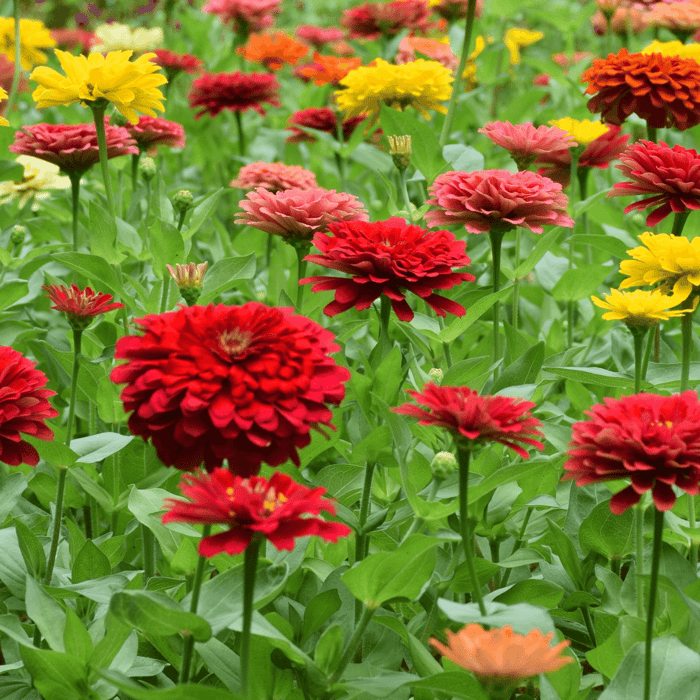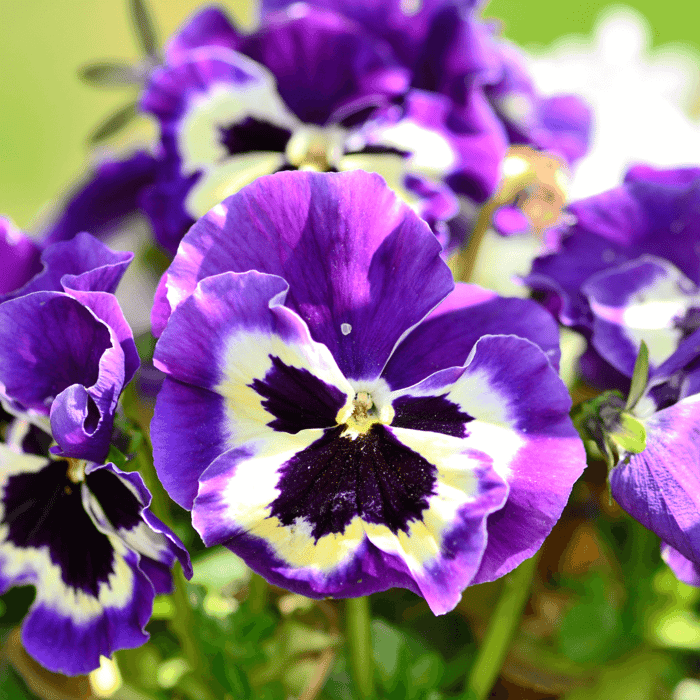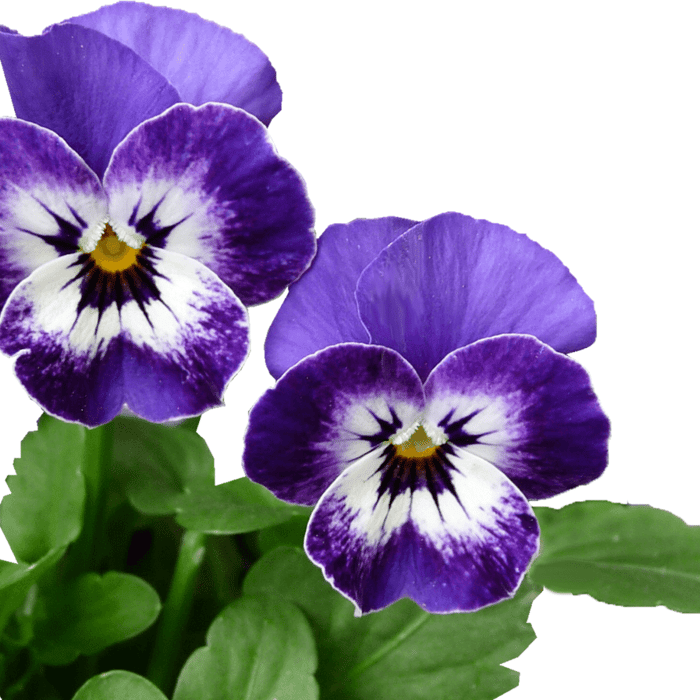Hello fellow gardeners! My name is Jeena, and today I'll be guiding you through planting California Giant Zinnia seeds. These beautiful, easy-to-grow flowers are deer resistant and perfect for flower arrangements. Let's dive into the world of Zinnias and learn how to plant California giant zinnia seeds.
1. Introduction to California Giants Zinnia
History of the Seed
California Giants Zinnia is a variety of zinnia bred for its large, showy blooms. They are native to Mexico and have been famous for gardens worldwide due to their easy-to-grow nature and vibrant colors.
Days till Maturity
California Giants Zinnia seeds typically take 75-90 days from planting to maturity, depending on the growing conditions and care provided.
Zinnia California Giants Seeds

$2.49
California Giants Zinnia Flower Seeds - Vibrant Heirloom Blooms for Your Garden! Transform your garden with the dazzling color and charm of California Giants Zinnia seeds. These heirloom, non-GMO, non-hybrid, open-pollinated zinnia seeds produce tall, robust plants with show-stopping blooms… read more
Plant Characteristics
- Planting Depth: 1/4 inch
- Plant Spacing: 12-18 inches apart
- Days to Germination: 7-10 days
- Plant Height: 3-4 feet
- Plant Width: 1-2 feet
- Sun Exposure: Full sun
2. Preparing the Garden for Planting
Before planting your California Giant Zinnia seeds, it's essential to prepare the garden bed:
- Choose a location that receives full sun for at least six hours daily.
- Zinnias thrive in well-drained soil, so avoid areas with standing water.
- Test the soil pH for a slightly acidic to neutral range (6.0-7.0).
- Amend the soil with organic matter or compost to improve drainage and fertility.
- Remove any weeds or debris from the planting area.
3. Planting Zinnia Seeds Indoors
Starting zinnia seeds indoors can give you a head start on the growing season, especially in areas with short growing seasons. Here's how to plant zinnia seeds indoors:
- Start seeds 4-6 weeks before the last expected frost date.
- Fill seed trays or pots with a well-draining seed-starting mix.
- Plant seeds 1/4 inch deep and cover lightly with soil.
- Keep the soil consistently moist but not waterlogged.
- Place the trays in a warm location, ideally with a temperature between 70-75°F.
- Once the seedlings have developed their first set of true leaves, transplant them into larger containers if needed.
4. Direct Sowing Zinnia Seeds
Direct sowing is an alternative method for planting zinnia seeds:
- Wait until the soil has warmed and there is no risk of frost, usually after the last frost date.
- Plant seeds 1/4 inch deep, spacing them 12-18 inches apart.
- Water the area thoroughly and keep the soil consistently moist until seeds germinate.
5. Transplanting Seedlings
When your zinnia seedlings are ready, transplant them into the garden:
- Harden off seedlings by gradually exposing them to outdoor conditions for 7-10 days.
- Choose a day with calm weather to transplant the seedlings.
- Dig a hole large enough to accommodate the seedling's root system.
- Gently remove the seedling from its container, careful not to damage the roots.
- Place the seedling in the hole, ensuring it is at the same depth as in the container.
- Fill the hole with soil and gently firm it around the seedling.
- Water thoroughly to help settle the soil.
Zinnia Seeds for Outdoor Planting | 5 Variety Pack
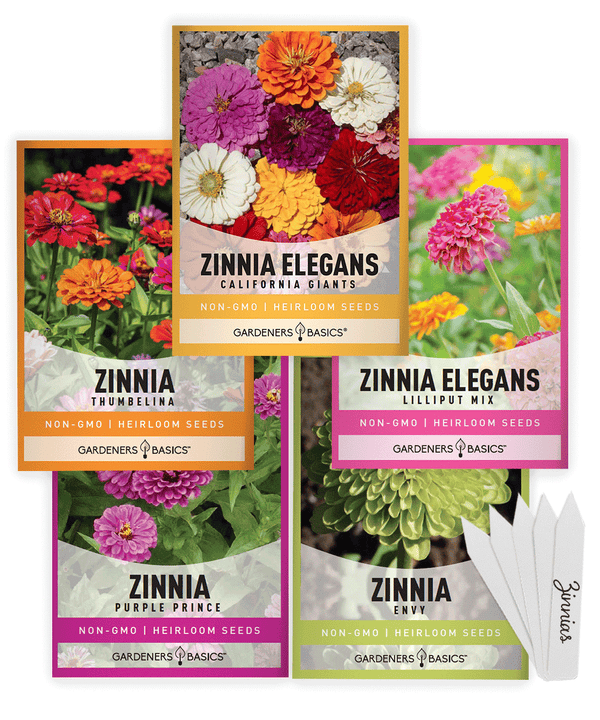
$9.95
Brighten Your Garden with Our 5 Zinnia Seeds Variety Pack! Bring bold color, sustainable beauty, and pollinator-friendly blooms to your garden with this stunning collection of zinnias. Perfect for gardeners looking to create eye-catching flower beds, cutting gardens, or pollinator… read more
6. Zinnia Care and Maintenance
Watering
Zinnias need regular watering to thrive. Aim for about 1 inch of water per week through rainfall or supplemental irrigation. Water at the base of the plant keeps the foliage dry and prevents the development of powdery mildew.
Fertilization
Feed your zinnias with a balanced, slow-release fertilizer at planting time. You can also apply a liquid fertilizer every 4-6 weeks during the growing season.
Mulching
Apply a layer of organic mulch around the base of your zinnias to help conserve moisture, suppress weeds, and regulate soil temperature. Keep the mulch a few inches away from the plant stems to prevent rot.
Deadheading
To encourage continuous blooming and maintain a tidy appearance, remove spent blooms by pinching or cutting them off at the base of the flower head.
Pest and Disease Control
Zinnias can be susceptible to powdery mildew, especially in humid conditions. To minimize the risk, ensure good air circulation around the plants, water at the base, and avoid overhead watering. Treat any affected plants with a fungicide if necessary.
Aphids and spider mites can also be a problem for zinnias. Monitor your plants regularly and use insecticidal soap or other eco-friendly options to control these pests.
7. Harvesting Zinnia Flowers for Cut Flower Arrangements
California Giants Zinnias are an excellent choice for cut flower arrangements. Here's how to harvest them:
- Cut zinnia flowers early in the morning when fully open but before they fade.
- Use sharp scissors or pruning shears to make a clean cut at an angle, about 1 inch above a leaf node or bud.
- Place the cut stems immediately into a bucket of water to keep them hydrated.
- Once indoors, re-cut the stems at an angle under water and remove any foliage that would be submerged in the vase.
- If desired, arrange the flowers in a vase with fresh water and flower preservative.
8. Saving Zinnia Seeds for Future Planting
If you'd like to save seeds from your California Giants Zinnias for future Planting, follow these steps:
- Allow a few of your best zinnia flowers to remain on the plant and mature fully.
- Once the flower heads have dried and turned brown, carefully remove them from the plant.
- Break open the dried flower heads to reveal the zinnia seeds, which will be attached to the base of the petals.
- Separate the seeds from the chaff and allow them to dry completely.
- Store the seeds in a cool, dark, and dry place in a labeled envelope or container until you're ready to plant them next season.
With proper care and attention, your California Giants Zinnia garden will be a vibrant and beautiful addition to your landscape. Enjoy the process of Planting, nurturing, and harvesting these stunning flowers, and share the beauty with friends and family through your cut flower arrangements. Happy gardening!
 FAQ Section - How to Plant California Giant Zinnia Seeds
FAQ Section - How to Plant California Giant Zinnia Seeds
Q1: Can California Giants Zinnia tolerate partial shade?
A1: While California Giants Zinnia can tolerate some light shade, they thrive best in full sun, with at least six hours of direct sunlight daily.
Q2: Are Zinnias deer resistant?
A2: Zinnias are considered deer resistant, making them an excellent choice for gardens where deer may be a problem.
Q3: How can I prevent powdery mildew on my Zinnias?
A3: To minimize the risk of powdery mildew, ensure good air circulation around the plants, water at the base to keep the foliage dry, and avoid overhead watering. If necessary, treat affected plants with a fungicide.
Q4: Can I grow California Giants Zinnia in containers?
A4: Yes, California Giants Zinnia can be grown in containers. Choose a large container with drainage holes and use a high-quality potting mix. Provide the same care as you would when planting them in the ground. Growing zinnia flowers in containers is easy.
Q5: Do I need to stake my California Giants Zinnia plants?
A5: Due to their height (3-4 feet), staking may be necessary to support the plants, especially in windy areas or if they become top-heavy with large blooms.
Q6: Are California Giants Zinnias annual or perennial?
A6: California Giants Zinnias are annual plants that complete their life cycle in one growing season. However, you can save seeds from your plants and sow them for a new batch of blooms the following year.
Q7: How long do Zinnia flowers last in a vase?
A7: Zinnia flowers can last 5-7 days or longer in a vase when adequately harvested and cared for. To extend their vase life, change the water every few days and keep them away from direct sunlight and heat sources.
Q8: Can I grow California Giants Zinnia from cuttings?
A8: While it is possible to propagate Zinnias from cuttings, they are most commonly grown from seeds. Propagating from seeds is generally more straightforward and results in a higher success rate.
Wildflower, Perennial, & Annual Flower Seed Kit | 35 Variety Pack
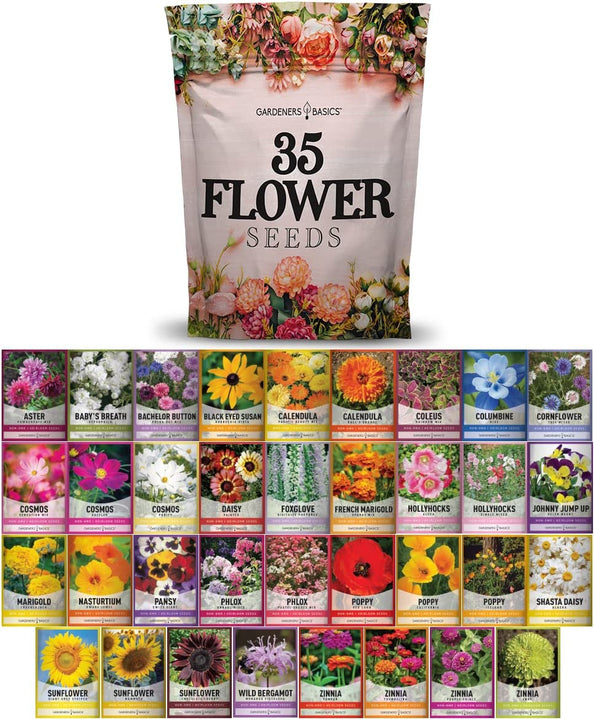
$29.95
$49.95
35 Flower Seeds Variety Pack – Heirloom, Non-Hybrid, Non-GMO, Open-Pollinated – Perfect for Pollinator-Friendly Gardens Transform your garden with our 35 Flower Seeds Variety Pack, offering a stunning and diverse selection of heirloom, non-hybrid, and non-GMO seeds. Each variety in… read more
Additional Growing Tips for California Giants Zinnia
Tip 1: Companion Planting
California Giants Zinnias can benefit from companion planting with other flowers or vegetables. Some suitable companions for Zinnias include:
- Marigolds: These flowers help repel pests and can add a beautiful contrast to your Zinnia garden.
- Cosmos: Another easy-to-grow, tall flower that complements Zinnias in the garden.
- Nasturtiums: These edible flowers can help deter pests while adding color and interest to your garden.
- Tomatoes and Peppers: Zinnias can attract beneficial insects that help with pest control in your vegetable garden.
Tip 2: Succession Planting
Consider succession planting for a continuous display of blooms throughout the growing season. Sow a new batch of seeds every 2-3 weeks to ensure a constant supply of vibrant Zinnia flowers.
Tip 3: Attracting Pollinators
California Giants Zinnias are beautiful and great for attracting pollinators like bees, butterflies, and hummingbirds to your garden. Plant a variety of Zinnia colors to create a diverse and welcoming environment for these beneficial insects.
Tip 4: Overwintering Zinnia Seedlings
If you live in an area with mild winters, you can overwinter your Zinnia seedlings in a greenhouse or cold frame for an early start to the next growing season. Be sure to provide adequate ventilation and monitor the temperature closely.
Tip 5: Choosing the Right Soil
While Zinnias are adaptable to various soil types, they prefer well-draining soil enriched with organic matter. Avoid planting in heavy clay or waterlogged soils, leading to root rot and other problems.
With these additional tips and the comprehensive guide, you'll be well-equipped to grow a stunning California Giants Zinnia garden. Enjoy the journey of Planting, nurturing, and admiring these lovely flowers that will brighten up your outdoor space and bring joy to your home with their cut flower arrangements. Happy gardening!



